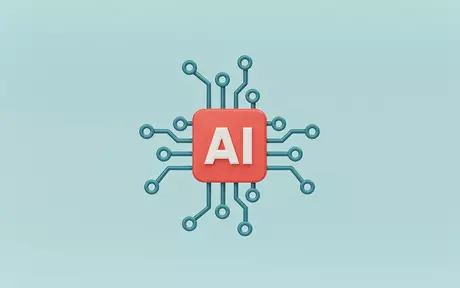
Future-proofing your talent strategy
Insight for business and HR leaders in this year’s Professional Services Maturity Benchmark Report from Service Performance Insight on overcoming obstacles following a year of disruption.
Service Performance Insight (SPI) has been publishing its Professional Services Maturity Benchmark for the past 15 years. Following the disruption of the last few years, this new report gives us an informative strategic look at an industry on the rise. The challenges facing HR and talent leaders center around how and where their people work, how they are utilized, and how they are compensated.
In this blog, we’ll be exploring the key findings relating to talent strategy. People are your most valuable asset – therefore, businesses need to optimize their talent as their performance directly correlates to success.
Talent Trends
Talent management focuses on the people, the processes, and systems required to recruit, hire, ramp, retain and motivate a high-quality workforce. It looks at recruiting, onboarding, continuous training and development, compensation, goal setting, performance management, and succession planning.
In the highly skilled roles of the professional services industry, high attrition rates have long since caused a problem, but experts now state that burnout, a breakdown in the social contract, lack of work/life balance, and loss of a sense of purpose are the leading causes.
According to SPI, talent remains a central issue for professional services organizations (PSOs), and there is a clear connection between attracting, recruiting, retaining, and motivating talent, and seeing optimal results from an engaged and dependable workforce.
Adjusting to working through the pandemic meant resetting many traditional employment practices, and now it is thought that over 75% of employees may never want to return to full-time onsite work. High-performing PSOs had already moved to support virtual working before they were forced to, and they are now accentuating the benefits of remote work with collaboration tools and team and skill-building combined with flexible hours and childcare. The percentage of onsite service delivery continues to go down from 40.2% of the billable hours to 33.9% in 2021 – the largest change SPI has seen. To future-proof going forward, firms must reevaluate their facility spending and shore up their support for working from home.
To combat high attrition rates, PSOs need to provide a truly great employee experience. For many people, the burden of childcare, homeschooling, and the responsibility of caring for elderly parents has taken its toll. To enable this top-rated employee experience, high-performing firms are looking to new technologies to redefine the workplace through tech-enabled data and knowledge sharing and collaboration.
Talent Maturity
SPI’s PS Maturity™ research over the past fifteen years tells us that less than 20% of professional services organizations have achieved greatness. Leaders know that improving talent maturity is the best and fastest way to improve overall results and must be a priority.
Which of the following SPI baseline levels does your organization fall into?
Level 1
You hire as needed, often ‘jack of all trades’ with generalist skills, and people are expected to multitask and cover multiple roles.
Level 2
You have started to forecast workloads, are developing job and skill descriptions. You have basic compensation plans and career paths and have started to measure people satisfaction.
Level 3
You have established programs for resource, skills, and career management. You have satisfaction surveys and training plans in place. Goals and measurements are aligned with compensation, and attrition is below 15%.
Level 4
You have business process and vertical skills in addition to technical and project skills. You have career planning, training, and mentoring in place. Attrition is low, and satisfaction is high.
Level 5
You continually staff and train to meet future needs. You have a highly skilled, motivated workforce. You outsource commodity skills or during peak demand. You have a sophisticated variable on and offshore workforce model.
What lies ahead in the war for talent?
Organizations need to embrace technology to support knowledge-sharing, team building, transparency, and collaboration. At the heart of continuous learning cultures needs to be the use of the best technologies with high-performing firms placing a premium on high-quality recruiting and onboarding programs that result in faster recruiting and ramping times combined with higher billable utilization. They need to hire the best talent and invest in them if they are to get the best from them.
People who are continually learning and expanding their knowledge base tend to stay with their employer. When work is not challenging or interesting, morale suffers, and attrition rises.
Virtual working now means firms don’t need to invest in expensive facilities but will be able to keep morale high with in-person meetings, company retreats, and team-building events to enhance communication and team spirit.
Over the past five years, real growth in billable hours (utilization) has been small. The Productivity improvement continues to come from using technology to lower overheads and administrative costs along with remote consulting delivery. PSO employees are working the same hours, but smarter. Billable utilization also went up from 71.4% in 2020 to 73.2% in 2021.
Voluntary attrition rose in 2021 as the economy improved, going up to 9.8% from 6.9% in 2020. Involuntary attrition went down as professional service leaders worked hard to keep the people they had. The APAC region saw the greatest voluntary attrition rate at 10.9%, followed by the Americas at 9.8% and EMEA at 9.3%.
What can we learn from this, and what are the solutions?
Professional services organizations need to build an employee-centered culture and nurture a sense of community and purpose among the workforce, which transcends billable hours and profitability. Building this type of culture will result in high employee engagement and confidence in the organization. Succession planning and career development are high on the agenda of most employees, so strategic initiatives are a must.
Strategic planning for change needs to focus on the right collaboration tools, along with team and skill-building. Knowledge-sharing, teamwork, transparency, and collaboration need to be at the core of a continuous learning culture.
- Human Capital Management (HCM) usage will continue to gain in importance as more and more firms realize the benefits of integrating payroll, recruitment, and skill-building information systems. Several years ago, HCM was used by less than one-third of PSOs – now, it is used by 65.2%.
- HCM applications provide powerful learning management platforms, so employees have a single system of record to enhance skills and manage certifications and credentials.
- Effective HCM usage requires effective talent management processes, including change management, leadership training and development. Unfortunately, the role of HR has not yet become strategic enough for many consultancies.

Future-proofing your talent strategy
Insight for business and HR leaders from this year's Professional Services Maturity Benchmark Report from Service Performance Insight on overcoming obstacles following a year of disruption.




